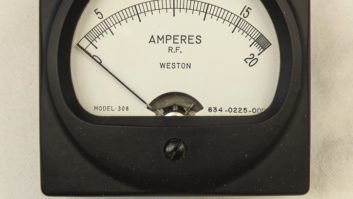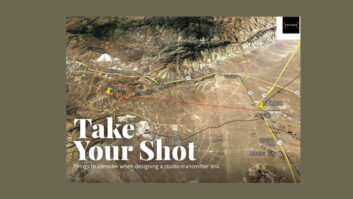Proponents hope the Federal Communication Commission will act soon to approve a voluntary FM IBOC power increase, before HD Radio portables begin hitting store shelves this fall. But the idea remains contentious, and critics oppose any such action. Here we present a sampling of industry commentary on this issue.
The background: The FCC first asked for comments on the issue last fall, when 18 broadcast groups and four equipment manufacturers formally sought agency approval of the concept. But with NPR conducting another round of tests related to the effects of an increase, the landscape has changed somewhat.
Specifically, NPR hopes to be able to recommend minimum spacing distances needed to protect analog signals from higher-powered digital operations. It intends to have results ready in September.
The FCC decided that developments since last fall prompted a new solicitation for comments this spring in four areas.
It asks whether it should wait to consider the power increase request until NPR tests are done and the public has had a chance to comment on the results.
The commission is also asking whether it should grant the entire 10 dB increase or some lower power; and whether standards should be built in to protect analogs operating on first-adjacents to digital stations, such as LPFMs.
And the agency asks whether explicit procedures should be adopted to resolve digital-into-analog interference complaints. (RW published comments on this topic in the Jan. 12 issue.)
The comment period is open until July 17. To file electronically, go to the FCC’s Web site and access the Electronic Comment Filing System at: fjallfoss.fcc.gov/prod/ecfs/upload_v2.cgi.
Some 100 new comments on the power issue had been filed as of June 19. Here is a sampling from those comments in MM Docket 99-325.
I am a professional broadcast engineer and I absolutely want to see a deferment of the decision on a power increase until NPR Labs completes their studies. The previous HD Interference study by NPR Labs differed greatly in conclusion from iBiquity’s internal studies. NPR Labs does thorough research with fully disclosed methodology and peer review, unlike iBiquity. …
Our station KAXE Grand Rapids on 91.7 has experienced a reduction in coverage 20 to 30 miles of our signal from HD interference from an HD station operating on 91.3. Note that we are the second-adjacent and yet we have experienced tremendous interference that has not been resolved.
Of course standards should be established to ensure the lack of interference to analog but this must also protect new, unbuilt stations that may have construction permits, not just existing stations. HD Radio is not being consumer-driven and analog FM still serves the vast majority of the public. Protection of analog FM must be paramount.
Daniel Houg
Chief Engineer
KAXE(FM)
Grand Rapids, Minn.
For those that have commented that the increase should not be permitted unless there is proof of no interference, one first has to acknowledge that there is almost always some level of interference that can be observed while listening to FM broadcasts, particularly in a mobile environment. So the question really becomes, what level of interference is acceptable and what is the solution to the problems? …
Postponing the 10 dB power increase will discourage the adaptation of HD Radio and listeners will have to endure many more years of interference whether HD Radio is around or not. Implementing the 10 dB increase now will give concerned listeners the option to hear interference free FM radio sooner by purchasing an HD radio.
The increased sales will lower the unit cost of HD Radio substantially, which will in turn get us closer to the day when pure digital mode is feasible as in the case of DTV. Sometimes a gradual change can kill a good idea.
Brian J. Kirby, BSEE
Lisle, Ill.
Delmarva Broadcasting Company (“DBC”) owns and operates 11 radio stations throughout Maryland and Delaware. Our first HD broadcast commenced in November of 2005 on WSTW(FM) in Wilmington, Del. Since that time we have completed two additional conversions: WAFL(FM), Milford, Del., and WXCY(FM), Havre de Grace, Md.
These radio stations, which are now broadcasting in HD, have a less than satisfactory HD signal. These signals do not fully cover our FCC protected service contour. This deficiency in signal has led to difficulties for individuals attempting to receive our HD signals, especially in businesses and homes.
DBC has experimented with numerous HD Radio receivers with limited success. DBC has determined that all “desktop” type radios require some type of external antenna to receive the HD signals reliably. In today’s competitive market, consumers will rarely take the time to install an external antenna. …
Without an inexpensive consumer option, it is also very difficult to build acceptance of our multicast channels. DBC has invested substantial resources to support this new broadcast medium, yet we find ourselves in a tenuous position because even those who have purchased HD radios have a difficult time setting them up to receive our programming. …
DBC supports the NPR study finding on interference; however we believe that a blanket and arbitrary number established without any real engineering to support the decision does a great disservice to consumers. If the FCC is serious in its stated desire to move to a digital future for all media, we must plan for an ultimate “drop dead” date on which analog facilities will go dark and radio will transition to an “all-digital” world such as television has done. Every short-term decision must be made with that long-term goal in mind.
Therefore the rulemaking process should be based on the long-term determination of the highest digital power level at which a facility can operate to serve its coverage area without interfering with co-channel and first- and second-adjacent digital signals. Once the ultimate digital power levels have been established, stations would be granted interim licenses to operate at lower HD injection levels that would not interfere with existing analog and HD signals under current parameters. The interim digital power level must be determined on a “case by case” basis in the determination of power increases.
Julian H. Booker, President
Jeffrey Twilley, Director of Operations & Technical Services
Robert A. Mercer, Vice President of Operations (ret.)
Delmarva Broadcasting Co.
As the owner-operator of WHMI(FM), Howell, Mich., Class A, 93.5 MHz, 5.2 kW, 354′ HAAT, a station that operates on a first-adjacent channel to WBCT (Grand Rapids, Michigan, Class B, 93.7 MHz, 320 kW, 780′ HAAT, grandfathered), I am already acutely aware of the interference that can be caused by a high-powered neighbor on the dial — in this instance, a station operating with analog and digital power 12 dB in excess of Class B limits. …
If this proposal finds favor at the commission, I would strongly suggest that digital power levels for all stations in no case exceed –10 dB referenced to class limits. …
[T]he increase would greatly improve digital reception; building penetration would approach that of the analog signal, mobile coverage would exceed that of analog, and dropouts due to buffering would be far less frequent. The digital signal would have a chance to become “real” — something it now decidedly is not. …
If a researched, appropriate digital power increase is adopted, secondary services like LPFMs and translators should not require protection beyond what they are afforded in the analog world. Special treatment of secondary services would create an administrative nightmare as would overly complicated procedures to resolve interference complaints among full-power stations. …
If digital radio is ever to have a chance, a power increase is likely necessary. The real question, I fear, is whether digital radio will ever be a mainstream medium. We may very well be discussing which color to paint the deck of the Titanic.
Greg Jablonski
President/General Manager
The Livingston Radio Co. /WHMI(FM)
Howell, Mich.
If the commission does adopt an HD Radio power increase it should be incremental to allow time for additional real-world experience to accumulate. Any such increase should be provisional. The application should include engineering documentation showing interference potential to all currently considered stations as is done for analog FM applications. At no point should the first allowed incremental increase exceed 3 dB [from 1 percent of analog power to 2 percent of analog power] in consideration of receiver IM, receiver IF selectivity and mutual destructive interference from co-channel stations….
A second increase to 5 percent of analog power is suggested after a period of five years to allow time for studies and engineering improvements to consumer equipment, the gradual replacement of older more interference-prone consumer receivers and transmission filter and analog/digital combining technologies to eliminate power wasted in reject loads….
The commission should establish explicit procedures for interference resolution including power reductions, termination of operation or other means of interference resolution. It should follow the “last station on” method of determining interference reduction. Thus a station increasing digital FM power that causes new interference would be solely obligated to resolve the issue to the satisfaction of the station receiving new interference or to the satisfaction of the commission that harmful interference has been minimized.
Henry Ruhwiedel, CPBE
Crown Point, Ind.












